Marketer's Preparedness Guide: How to Influence LLMs and Win Customers
Marketer's Preparedness Guide: How to Influence LLMs and Win Customers

Why LLMs need to fit into your search strategy

AI-driven search isn't coming — it's already here. And the large language models (LLMs) that power ChatGPT, Google Gemini, and Perplexity are shifting the experience from links to answers.
Unlike "traditional" search algorithms, LLMs don't push out links that match keyword queries. The LLMs use AI to interpret information they retrieve from multiple, diverse data sources, then generate conversational responses.
That means the quality of your data — how it's structured, where it lives, and how consistent it is — directly shapes what LLMs say about your brand. That means AI is your new customer.
After all, if LLMs that power AI search can't find you, your customers won't either.
So, how do you make sure your brand can be found in AI-driven search — and that the information about your brand that comes back is right?
It all starts with structuring your data properly — especially to facilitate LLMs and RAG success.
Why a Knowledge Graph is Essential for AI Visibility
A knowledge graph is a data framework to centralize, structure, and distribute information (like hours, services, product details, and FAQs) so that AI-driven platforms can understand it.
Structured, centralized data helps LLMs interpret what your brand offers, while also making it easier to distribute updates at scale across publishers.
Without a knowledge graph, your brand data is scattered inconsistently across sources. When this happens, AI models find your brand to be unreliable or untrustworthy, so it's nearly impossible to surface in their search platforms.
The four main digital touchpoints that influence LLMs

1. Listings with brand Information
LLMs reference local listings across a broad network — not just Google or Yelp, but smaller directories, too. They're looking for consistency in NAP data, services, hours, and more.
If your listings aren't accurate and up to date everywhere, there's a significant chance that AI could present inaccurate information about your brand.
Keeping this data updated in a knowledge graph stops mistakes and misinformation. This protects your brand and builds trust with LLMs. As a result, you can improve visibility, boost engagement, and increase foot traffic.
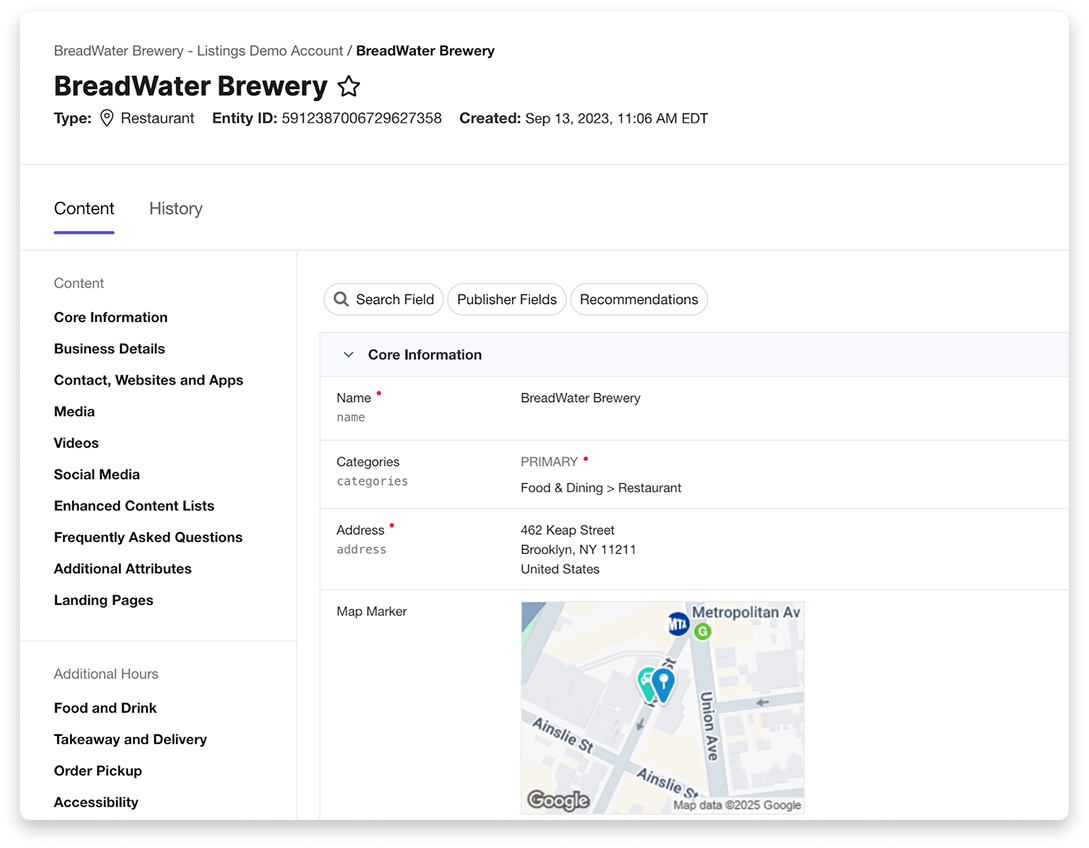 Being seen matters. With Yext Listings, your brand's information stays up-to-date and easily accessible everywhere customers — and AI search tools — are looking.
Being seen matters. With Yext Listings, your brand's information stays up-to-date and easily accessible everywhere customers — and AI search tools — are looking.
2. Websites with local pages as content
Your website gives AI models detailed context about your brand. Multi-location brands should build out location-specific local pages on their website. A healthcare brand might create a local page for each provider at a location, including bios, specialties, FAQs, and a booking call to action. A restaurant brand might create a landing page with NAP data, hours, seasonal menus, happy hour promotions, and feel-good stories about ingredients or local teams.
LLMs scan headings, FAQs, and structured data to understand the depth and breadth of your products and services. Well-organized, relevant content ultimately helps AI understand your brand better and better match to user intent, especially in local searches.
Local pages help you drive discovery for high-intent customers, so they can find and choose your brand at the right time. Use Yext Pages to easily create search-optimized landing pages for your locations to boost your listings' performance and convert more search queries into customers.
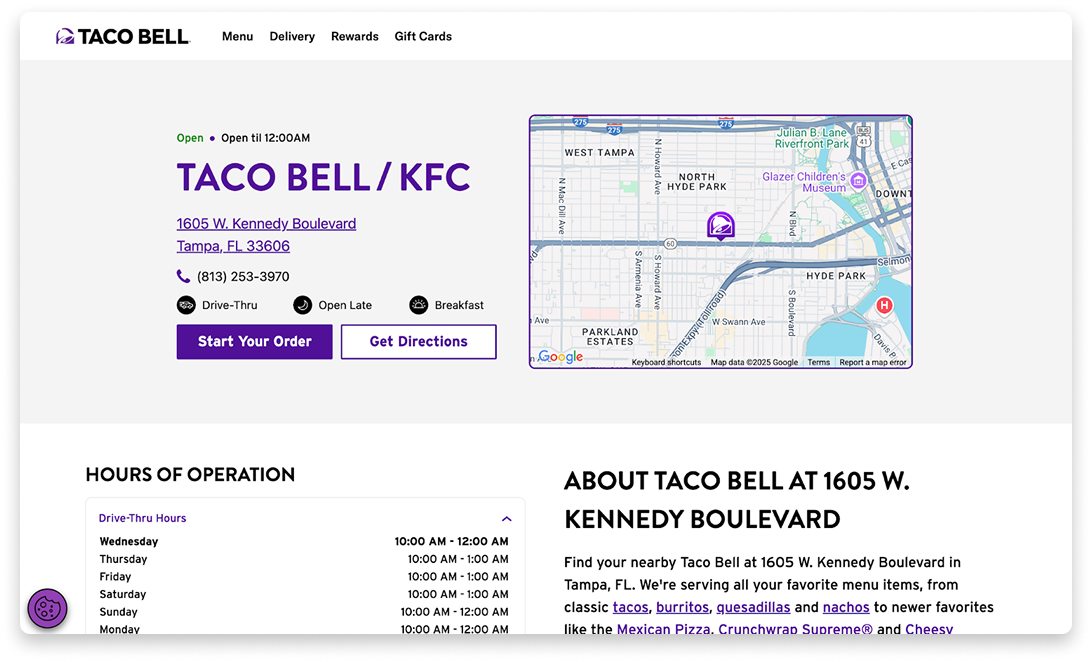
3. Reviews and customer feedback
LLMs don't just scan star ratings — they analyze the quantitative data about your brand (like volume and recency of reviews). It also analyzes the qualitative feedback customers leave in reviews and comment fields. This data gives AI the context it needs to respond to detailed prompts.
For example, it helps answer questions like, "Where can I find a late-night Italian restaurant with tiramisu and great wine?" and "Help me find an estate attorney who specializes in prenups."
Based on the sentiment, credibility, and frequency* of reviews, LLMs will determine if your brand is trustworthy and relevant enough to surface.
*Customers expect brands to respond to their feedback immediately. 69% expect a brand to respond within a week. But, responding to reviews is also a powerful signal to AI models. Active, engaged reputation management signals your trustworthiness. LLMs will reward it with improved brand visibility.
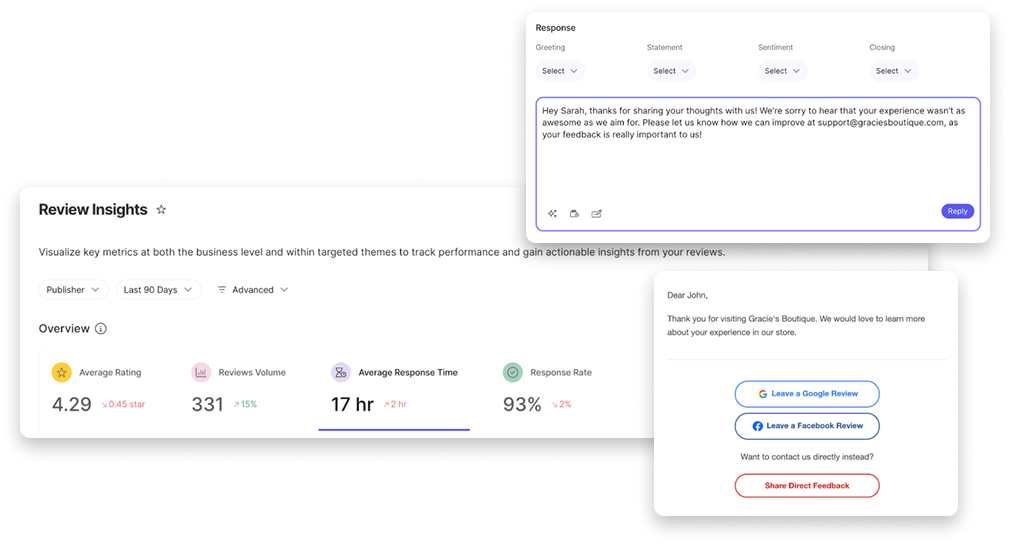
Effective online reputation management now goes beyond how customers feel about you. Reputation management now includes how AI and LLMs feel about you, too. Use Yext Reviews to proactively drive positive reviews, engage with customers at scale, and signal trust to AI.
4. Unstructured content and brand signals from other sources
LLMs process unstructured content — like blogs, reviews, and other publicly available content — to check for brand relevance and authority. When you enrich your brand content with photos, videos, podcast links, and metadata, that also grabs the attention of AI. Add user-generated content (UGC) into the mix, and all that unstructured content helps inform LLM-generated responses.
Social posts may not greatly impact AI rankings, but public content does matter. Engagement on platforms like Reddit and YouTube offers AI extra brand signals. After all, 51% of customers now use social media as a search channel (not just to "like" posts).
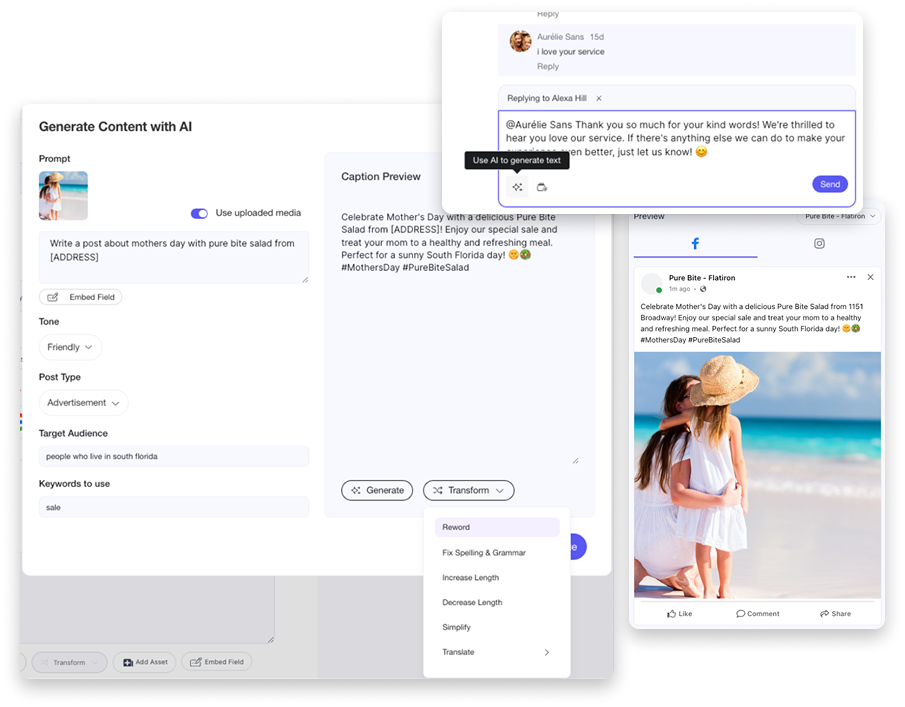
Harnessing structured and unstructured data brings more customers to your brand. Combine Yext Listings and Yext Social to turn every customer interaction into a more trustworthy, prominent digital presence.
Accuracy and consistency matter across all your digital touchpoints

LLMs reference both structured and unstructured data to understand and surface brand information. So, make it easy for AI to reference your data — and trust it.
Structured data (from schema markup, knowledge graphs, and business listings) acts as a roadmap, making key facts (hours, services, NAP data) easy for AI to retrieve.
Unstructured data (like customer reviews, social posts, and blog content) helps AI assess sentiment, relevance, and brand authority.
Every digital touchpoint — from listings and local pages to reviews and social media — falls into one of these two sources of brand information. A well-structured knowledge graph supports them both.
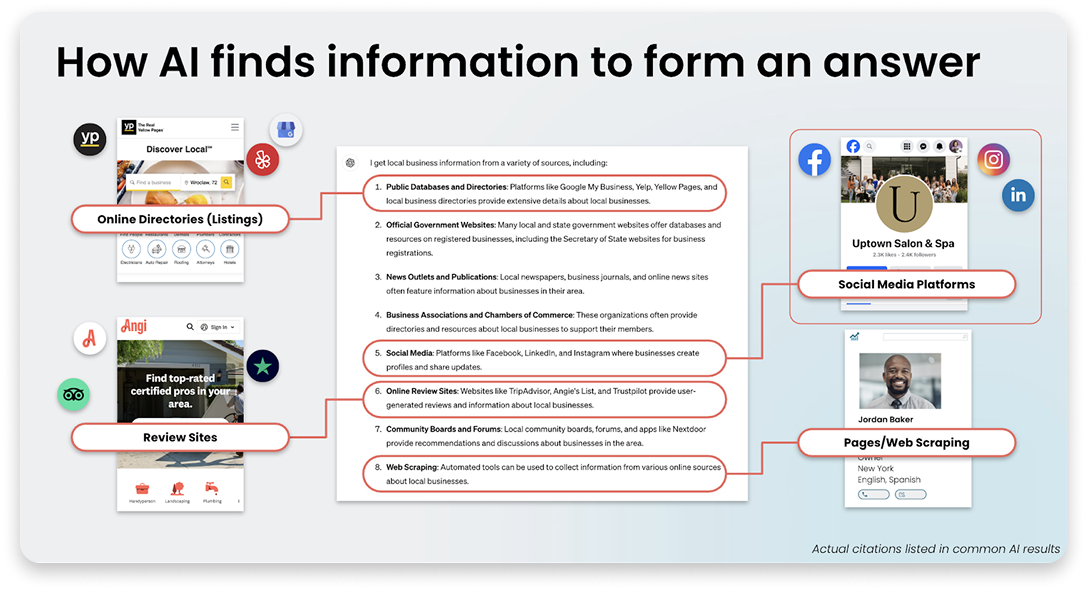
Actionable steps: How to make your content AI- and LLM-friendly today

As more and more customers ask Siri, search Google, consult with Claude, and prompt ChatGPT, there are actionable steps you can now to crack the code to make your brand visible in AI search:
-
Complete a data audit. Identify gaps in structured and unstructured data, and implement a content marketing plan to address them. Make sure all listings and brand details are correct everywhere you publish (and consider expanding your publisher network).
-
Use a structured data strategy. Prioritize schema markup and an entity-based knowledge graph to store and organize data.
-
Fold in unstructured content strategy. Keep creating (or updating) unstructured content that gives LLMs nuanced, context-rich data to interpret.
-
Unify your brand presence. Sync business information from your knowledge graph across listings, pages, and all your digital touchpoints.
-
Create and use feedback loops. Actively track AI-driven search results and adjust your data and content strategy as needed.
Remember, customers trust what AI tells them. More and more, customers are skipping traditional search engines and relying on LLMs and AI assistants for direct answers. As the AI-driven search landscape continues to evolve, LLMs will continue to surface brands they trust. Make sure your brand is one of them.



